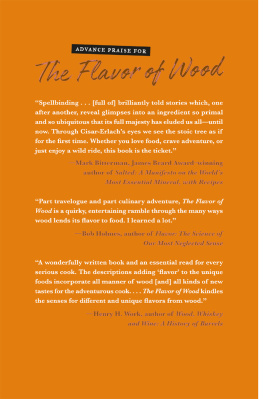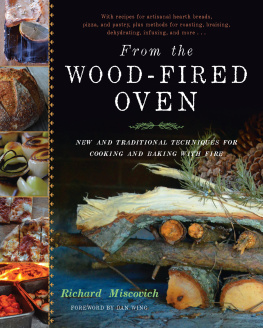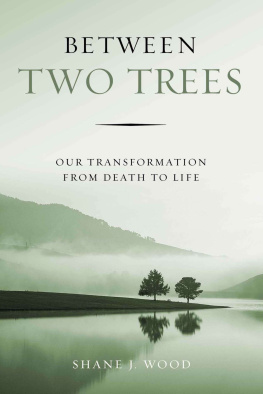
Copyright 2019 by Artur Cisar-Erlach
Published in 2019 by Abrams Press, an imprint of ABRAMS. All Rights Reserved.
No part of this publication may be reproduced, stored in a retrieval system, or transmitted in any form or by any means, mechanical, electronic, photocopy, recording, or otherwise without permission in writing from the publisher.
Cataloging-in-Publication Data is available from the Library of Congress
Book design and typeformatting by Bernard Schleifer
Manufactured in the United States of America
ISBN 978-1-4683-1672-8
eISBN 978-1-4683-1673-5
Abrams books are available at special discounts when purchased in quantity for premiums and promotions as well as fundraising or educational use.
Special editions can also be created to specification. For details, contact specialsales@abramsbooks.com or the address below.
Abrams Press is a registered trademark of Harry N. Abrams, Inc.

ABRAMS The Art of Books
195 Broadway, New York, NY 10007
abramsbooks.com
This book couldnt have been completed without the incredible support of my girlfriend, Carmen; it wouldnt have been started without the wonderful encouragement by my parents; and it couldnt have been filled page to page without the help of the greatest friends imaginable.
Thank you, Kira!
CONTENTS
INTRODUCTION
What Is Wood?
What is wood?
The answer to this question very much depends on who you ask.
Foresters, cabinetmakers, and the broader public alike generally use the technical definition of wood that classifies it as a raw material It is used to construct everything from bridges to the frameworks of houses, intricate pieces of furniture, musical instruments, and sculptures. When burned, its energy is used to heat our homes, or even melt iron or glass.
Biologists on the other hand see wood as a key player in the world of plants. Defined as the principal strengthening and nutrient-conducting tissue of trees and other plants and one of the most abundant and versatile natural materials, wood gives plants stability and strength, provides the transport infrastructure for nutrient-rich fluids, and offers protection. If compared to the human body, wood would have the combined functions of our bones, flesh, blood vessels, and skin.
Being a cabinetmaker as well as a biologist I would like to use a combination of both definitions.
In my opinion, wood is the tree as a whole, which includes roots, trunk, branches, leaves, the environment it grows in, the ecosystem it sustains, and its relation to the people working and living with it. I propose to understand the word wood in a much broader sense, which includes its technical meaning, its integral role in the plant world, its importance to the environment, and its huge socioeconomic significance.
Trees have always had a profound influence on humans. We started off as small, tree-dwelling insect eaters living in the great tropical forests of what is today known as North America, Africa, Asia, and Europe. Only later, when a cooling world climate turned the forests of Africa into savannas and open woodlands, did we come down from the trees and start to evolve into the bipedal, agrarian and urban beings we are now. Nevertheless, those open woodlands and savannas must have left a lasting impression on us. We try to recreate them in our parks and gardens, wide-open green spaces with carefully selected and positioned trees and shrubs.
The close relationship between trees and humans is also evident in religious contexts. In shamanic religions the tree is regularly regarded as the symbol of life itself. In the Bible as well as the Torah, a symbolic tree is placed in the center of the Garden of Eden. The Quran has the same narrative; there it is called the tree of eternity. Interestingly, the word Eden stems from the ancient Sumerian word edin-na, which means plain or steppe. A steppe, by definition, is a wide-open grassland with only a few trees surrounding a source of water. So what religious writings describe as the Garden of Eden, remarkably, is the very landscape we humans evolved in.
Similarly, Hinduism and Buddhism worship a large and impressive species of the fig tree with the fitting scientific name Ficus religiosa. In Hinduism, the tree is a trinity; the roots are Brahma (the Creator), the trunk is Vishnu (the preserver), and the leaves are Shiva (the destroyer or transformer). In Buddhism the fig tree is called Bodhi, or tree of enlightenment, as Buddha was sitting beneath one when he reached enlightenment. It is for this reason that there are fig trees in almost every Buddhist monastery.
In addition to the stately tree symbolizing life in many religions, parts of trees, like twigs, leaves, flowers, and fruits, are also frequently used as metaphors by those very same religions. The Christian motifs of the olive branch (a peace symbol) or the forbidden fruit (symbolizing
On a related note, the family tree is used to visualize ones ancestry. Visual and organizational representations of trees are also used to schematize the increasingly complex structures of corporations, organizations, and governments.
Famed Swiss psychiatrist and psychotherapist Carl Jung spent many years exploring symbols in the unconscious mind stemming from different cultures. A frequent image in dreams was a tree. Jung discovered that the meaning of trees in dreams corresponded to the use of trees in ancient scriptures, myth, and poetry of which the dreamers had no previous knowledge. Therefore he concluded that the tree is a human archetype, a symbol hardwired into the brains of people of every culture.
The pressing issue of climate change is unquestionably related to the global decline of major wooded areas, including the Amazon rainforest and the Russian boreal forests. Environmental organizations like the World Wide Fund for Nature (WWF) and Greenpeace regularly use the imagery of deforested areas in their campaigns, stressing the importance of trees and forests for the reduction of atmospheric CO2 concentrations as well
To put it simply, trees and wood are everywhere. They are a constant human companion, be it as a symbol in religion, construction material, fuel source, mood booster, or as an immensely important factor for our economy. They are even in our dreams.
But are they in our food?
And if so, what is the flavor of wood? Can it be described? Is it a stand-alone, simple flavor, like sweet or sour? Or is it a complex, exotic one consisting of many different components? Which food products out there are influenced by wood? Who are the people producing them? How would you go about finding the answers to those questions?
It was during my graduate studies in gastronomy, while working on a creative writing assignment on whisky and wine, that I suddenly began to wonder about the wooden barrel.
Why is it that discussions of wine and whisky focus on the quality of ingredients, the producers knowledge, and the importance of aging, but rarely analyze the vessel in which these components combine: the wooden barrel? After all, a lot of knowledge and craftsmanship goes into making one. As wood is a living material, the barrel surely must add flavor do wooden barrels produce other flavors? Do they share a common flavor profile? And why is everyone only using barrels made from oak when there are so many other tree species out there?
The more I thought about it, the more I realized that it was not only wine and whisky that come into contact with wood or parts of the tree. Some foods, like maple syrup or tea, are actually made from trees. Others, including meat, fish, and even chocolate or pasta, are both preserved and flavored by wood smoke. Also, if I thought about the flavor of wood, I subsequently had to think about the smell of wood, as scent and flavor are interconnected. Are there any perfumes derived from trees?
Next page










